Despite Being Under Criminal Investigation, Uber Got a Great Deal on Otto

Uber Technologies Inc. received quite a bit of publicity when it purchased autonomous semi truck developer Otto in 2016. Still, it saw even more headlines when it became embroiled in a trade secrets lawsuit with Waymo. That case involved files obtained by Anthony Levandowski, former Google engineer and co-founder of the self-driving truck company, who was accused of selling confidential data to Uber (along with his business).
The bad news is that Uber now the subject of a federal investigation and knee-deep in the aforementioned litigation. But the good news is that it appears to have scored a really sweet deal on Otto.
After purchasing the autonomous trucking startup, the assumption was that the deal was for 1 percent of Uber’s stock, which would have been worth around $680 million at the time. But, according to IEEE Spectrum, documents filed as part of the company’s ongoing lawsuit with Waymo indicate the sum may be closer to $220 million.
Finding Otto’s legitimate value is important because the prosecution has argued that Uber paying the “remarkable sum” of $680 million for “a company with few assets and no marketable product” is possible evidence that it was really buying misappropriated trade secrets. The ride-hailing firm has previously denied this by saying it “purchased talent, not technology” — using incentive stock instead of cash. But things didn’t get really interesting until the actual terms of the purchase were revealed in a partially unredacted deposition from Uber’s vice president of corporate development, Cameron Poetzscher.
From IEEE Spectrum:
Poetzscher said, “In late 2015, [the Otto deal] was a customer/vendor relationship. And we shifted strategy to say we’d rather have these people as employees… Ultimately, we hired them. We paid $100,000 in cash, and we gave a commitment to issue… approximately 12 million shares of Uber, contingent on meeting milestones.”
With Uber having issued about 1.5 billion shares, the Otto purchase represented 0.8 percent of the company’s stock. That works out to about $566 million at Uber’s 2016 valuation. The cash payment of $100,000 was presumably for each of Otto’s 90-plus employees, accounting for another $10 million at most. The total of $567 million is about $100 million less than the $680 million reported at the time. (Spectrum approached Uber for confirmation of these numbers, but did not receive an immediate reply).
However, a lot has changed since last August. In May, Anthony Levandowski was fired from his position overseeing Uber’s self-driving technologies for not cooperating with the company’s investigation into Waymo’s allegations. At a court hearing, Uber revealed that Levandowski had been granted 5.31 million Uber shares during the Otto acquisition – but also that none of them had vested. When Levandowski left the company, he presumably took with him only the $100,000 signing bonus that all Otto employees received.
Levandowski’s 5.31 million shares accounted for nearly 45 percent of the Otto purchase – and the value of the remainder seem to have plummeted. Although Uber is privately held, its shares can be roughly valued by the amount that institutional investors pay for a stake in the company. The most recent proposed investment, by Japanese technology firm SoftBank, would value Uber’s shares at $33 each – a drop of about a third since its last funding round. That means the remaining 6.69 million shares could be worth just $221 million.
Further down the rabbit hole, U.S. District Judge William Alsup was apprised of a pending criminal investigation against Uber by San Franciscan federal prosecutors. Receiving the initial letter on November 22, Alsup was issued a second notification that the information not be made public. While he obliged temporarily, Alsup unsealed both letters earlier this week.
The juiciest tidbit to be gained from them was a claim from a former Uber employee that the company used “non-attributable electronic devices” to conceal information about “wrongfully-obtained intellectual property.” As a result, Alsup was forced to postpone the continuation of the trial last month. At the time, it was believed that Uber and its attorneys may had withheld evidence, though no further details were given.
[Image: Uber Technologies]

A staunch consumer advocate tracking industry trends and regulation. Before joining TTAC, Matt spent a decade working for marketing and research firms based in NYC. Clients included several of the world’s largest automakers, global tire brands, and aftermarket part suppliers. Dissatisfied with the corporate world and resentful of having to wear suits everyday, he pivoted to writing about cars. Since then, that man has become an ardent supporter of the right-to-repair movement, been interviewed on the auto industry by national radio broadcasts, driven more rental cars than anyone ever should, participated in amateur rallying events, and received the requisite minimum training as sanctioned by the SCCA. Handy with a wrench, Matt grew up surrounded by Detroit auto workers and managed to get a pizza delivery job before he was legally eligible. He later found himself driving box trucks through Manhattan, guaranteeing future sympathy for actual truckers. He continues to conduct research pertaining to the automotive sector as an independent contractor and has since moved back to his native Michigan, closer to where the cars are born. A contrarian, Matt claims to prefer understeer — stating that front and all-wheel drive vehicles cater best to his driving style.
More by Matt Posky
Latest Car Reviews
Read moreLatest Product Reviews
Read moreRecent Comments
- Jkross22 Tim Apple sniffing around to see if he can sucker someone else into under-RAM'ing devices to save $2/unit and force upgrade people.
- Jkross22 Not to rub salt in the wound, but why would you put your hq in some extraordinarily expensive real estate like Manhattan Beach? I know little of Fisker the person, but this reeks of ego and the desire for appearances.
- 3-On-The-Tree I’ve responded to several bike accidents where if the guy wasn’t wearing a helmet he would’ve been in a casket. Plus it saves your hearing.
- Wjtinfwb Nice cars and a find if you're into Radwood type iron. But a near 40 year old anything, even something as robust as a Legend is going to have failure points that would be prohibitively expensive to fix. Electronics, A/C, leaky old gaskets, creaking suspension bushing etc., not to mention the lack of safety gear and an interior that no doubt has "seen a lot". I applaud the manual transmission, but you could likely find something 30 years newer for not much more money to hone your heel and toe skills on before graduating to a more expensive ride.
- ScarecrowRepair Considering how over-priced Apple products are, I doubt a cheap Rivian is in the works.



















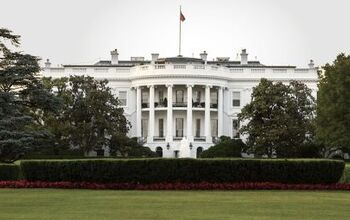


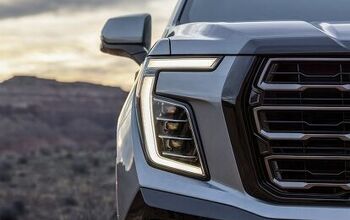

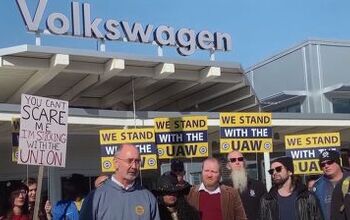
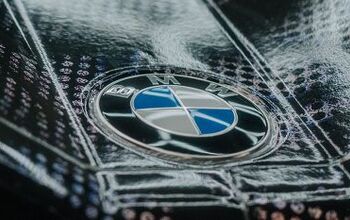
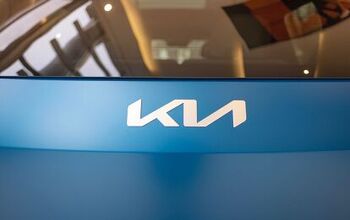



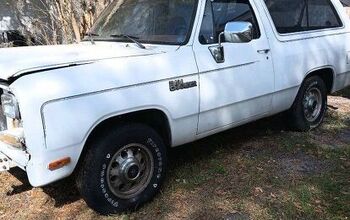

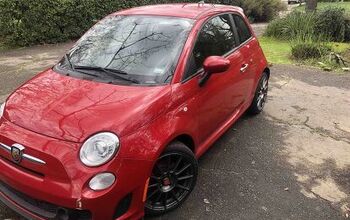
Comments
Join the conversation
The Uber onion has more layers than anyone imagined, and they all smell bad.
"Great Deal" my rear end. The Otto guys wanted to chase the lowest hanging fruit, semis on predictable routes along as empty as available highways, to get the ball rolling on autonomous vehicles in the real world. For real, rather than in the collective imaginations of clueless hucksters and their chosen mooches. Put trucks out there. See what happens. Fix problems as they arise. Rinse. Repeat. Rather than sit in a room debating pros and cons of all the great and all the scary things that's "going to" happen, if only enough clowns hand us a chunk of their Fed printed welfare checks. The pre shakedown Uber "screw it, let's do it" mentality, was a much better fit for this, than both Google/Waymo's arguable over cautiousness; and laying down playing petting zoo toy for the usual gang of less-than-nothing, simultaneously clueless and straight up unintelligent clown army of lawyers regulators and "investors" that have strangled and destroyed what was left of Silicon Valley on the back of unearned Fed handouts. Take that away, and Uber paid hundreds of millions for a bunch of people whose main qualification was specifically their "can do, or at least can try darnit" mentality. Which is a pretty darned rare commodity amongst people with the knowledge and brains to have much of chance of making headway attempting something as complicated as autonomous driving in even limited real world scenarios.